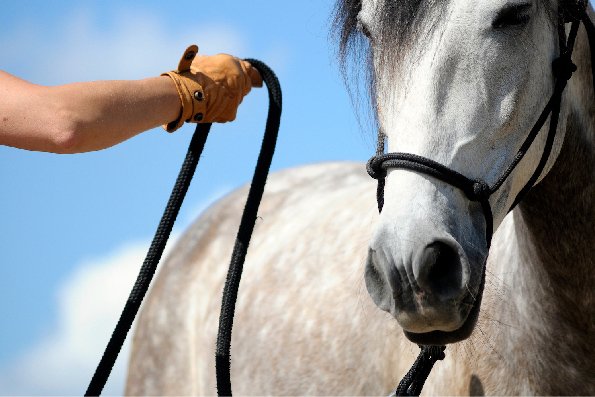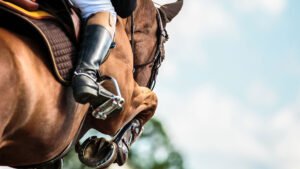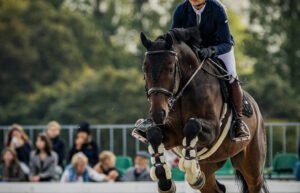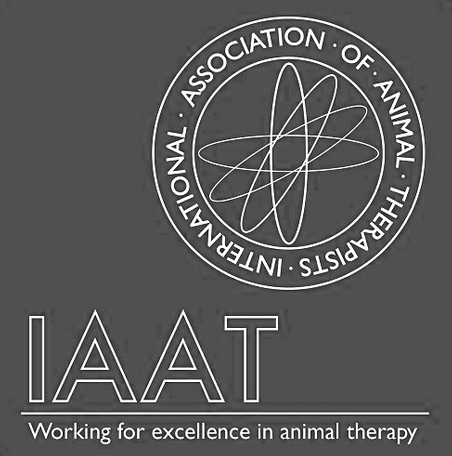The equine back is central to both musculoskeletal function and the horse’s ability to carry a rider effectively (Ridgway & Harman, 1999). Yet, back pain remains one of the most common issues affecting performance and welfare. It is often triggered by factors such as saddle pressures and rider weight, which can contribute to soft tissue damage, thoracolumbar discomfort, muscle spasm, inflammation, and even nerve impingement (Von Peinen et al., 2010; Prisk and García‐López, 2019; Clayton et al., 2023).
To appreciate the sensitivity of this region, consider that even the pressure from a blanket can prompt a subtle postural shift, causing the horse to hollow its back slightly (Clayton et al., 2010). The cumulative impact of tack and a rider amplifies these effects considerably. Studies have shown that ridden exercise introduces significantly greater physical demands than non-ridden work, leading to altered gait patterns, including changes in stride length, symmetry, and lateral movement (Mottini et al., 2006).
Groundwork provides an essential opportunity to build healthy musculature and promote correct posture without the added burden of rider and tack (Williams, 2015). This is especially relevant for developing the strength and control of both epaxial and hypaxial muscle groups, which are critical for spinal stability and coordinated movement (Hyytiäinen et al., 2014).
Incorporating functional training from the ground strengthens the postural muscles, enhances stride quality, and contributes to more positive behavioural responses (Rodrigues et al., 2023). A well-designed programme should include a combination of:
- Dynamic mobilisation exercises (DMEs) – such as baited stretches for rounding the back, extending the neck, and lifting through the thoracic spine.
- Core strengthening exercises (CSEs) – including back lifts and weight-shifting tasks like tail pulls or walking backwards.
- Proprioceptive training – using ground poles to stimulate postural adjustments and coordination.
These strategies specifically activate key regions such as the epaxial, abdominal, and sub-lumbar muscles – structures fundamental to posture and injury prevention (Back & Clayton, 2013; De Oliveira et al., 2015; Shakeshaft and Tabor, 2020). Exercises should be progressive, gradually increasing in complexity and duration to support long-term musculoskeletal adaptation (Clayton, 2016).
Furthermore, varying gaits during groundwork enhances neuromotor control. Since core muscle activation patterns differ across walk, trot, and canter, working in different gaits facilitates improved motor patterning and functional strength (Back & Clayton, 2013). Incorporating pole work not only refines proprioception but also recruits extrinsic forelimb muscles, including elements of the thoracic sling.
Ultimately, groundwork is not simply a warm-up or a fallback for non-ridden days—it is a valuable component of a comprehensive training and rehabilitation strategy. Improving a horse’s postural strength and comfort positively influences behaviour and safety, benefiting both horse and handler.
Correct posture: the key to tangible progress
Correct posture is not simply a marker of good training—it is foundational for a horse’s ability to move efficiently, stay balanced, and make meaningful progress. Postural alignment directly influences the horse’s muscular effort and stability (Gellman and Ruina, 2022).
Moreover, the interplay between horse and rider posture is critical; asymmetries in the rider’s seat can disrupt the horse’s biomechanics, leading to uneven loading, discomfort, and compromised performance(MacKechnie-Guire et al., 2020). Incorporating groundwork that promotes correct posture and symmetry not only supports musculoskeletal health but lays the groundwork—literally—for more consistent, harmonious ridden work.
_____________________________________________________________________________________________________________
REFERENCES
Back, W. & Clayton, H. M. (2013). Equine Locomotion, Oxford, Saunders Elsevier.
Clayton, H., Kaiser, L. & Nauwelaerts, S. (2010). Pressure on the horse’s withers with three styles of blanket. The Veterinary Journal, 184 (1): 52-55.
Clayton, H. M., Mackechnie-Guire, R. & Hobbs, S. J. (2023). Riders’ Effects on Horses—Biomechanical Principles with Examples from the Literature. Animals, 13 (24): 3854.
De Oliveira, K., Soutello, R. V. G., Da Fonseca, R., Costa, C., De L. Meirelles, P. R., Fachiolli, D. F. & Clayton, H. M. (2015). Gymnastic Training and Dynamic Mobilization Exercises Improve Stride Quality and Increase Epaxial Muscle Size in Therapy Horses. Journal of Equine Veterinary Science, 35 (11-12): 888-893.
Hyytiäinen, H. K., Mykkänen, A. K., Hielm-Björkman, A. K., Stubbs, N. C. & McGowan, C. M. (2014). Muscle fibre type distribution of the thoracolumbar and hindlimb regions of horses: relating fibre type and functional role. Acta Veterinaria Scandinavica, 56 (1): 8.
Gellman, K. & Ruina, A. (2022). Standing horse posture: A longer stance is more stable. Biology Open, 11.
MacKechnie-Guire, R., MacKechnie-Guire, E., Fairfax, V., Fisher, M., Hargreaves, S. & Pfau, T. (2020). The Effect That Induced Rider Asymmetry Has on Equine Locomotion and the Range of Motion of the Thoracolumbar Spine When Ridden in Rising Trot. Journal
Mottini, V., Leleu, C. & Cotrel, C. (2006). Harnessed vs. mounted Standardbreds on the track: changes in gait and physiological variables. Equine veterinary journal, 38 (S36): 468-472.
Prisk, A. J. & García‐López, J. M. (2019). Long‐term prognosis for return to athletic function after interspinous ligament desmotomy for treatment of impinging and overriding dorsal spinous processes in horses: 71 cases (2012–2017). Veterinary Surgery, 48 (7): 1278-1286.
Ridgway, K. & Harman, J. (1999). Equine back rehabilitation. Vet Clin North Am Equine Pract, 15 (1): 263-80, x.
Rodrigues, P. G., Fidêncio, C. F., Oliveira, K. D., Silva, C. M., Oliveira, C. G., Carvalho, J. M. O., Santos, A. D. F., Oliveira Junior, G. M. D. & Souza, J. C. D. (2023). Functional training promotes benefits in the physical condition of horses. Turkish Journal of Veterinary & Animal Sciences, 47 (6): 556-564.
Shakeshaft, A. & Tabor, G. (2020). The Effect of a Physiotherapy Intervention on Thoracolumbar Posture in Horses. Animals, 10 (11): 1977.
Von Peinen, K., Wiestner, T., Von Rechenberg, B. & Weishaupt, M. A. (2010). Relationship between saddle pressure measurements and clinical signs of saddle soreness at the withers. Equine veterinary journal, 42 (s38): 650-653.
Williams, J. M. (2015). The principles of training: the horse. Brill | Wageningen Academic, pp 175-195.

